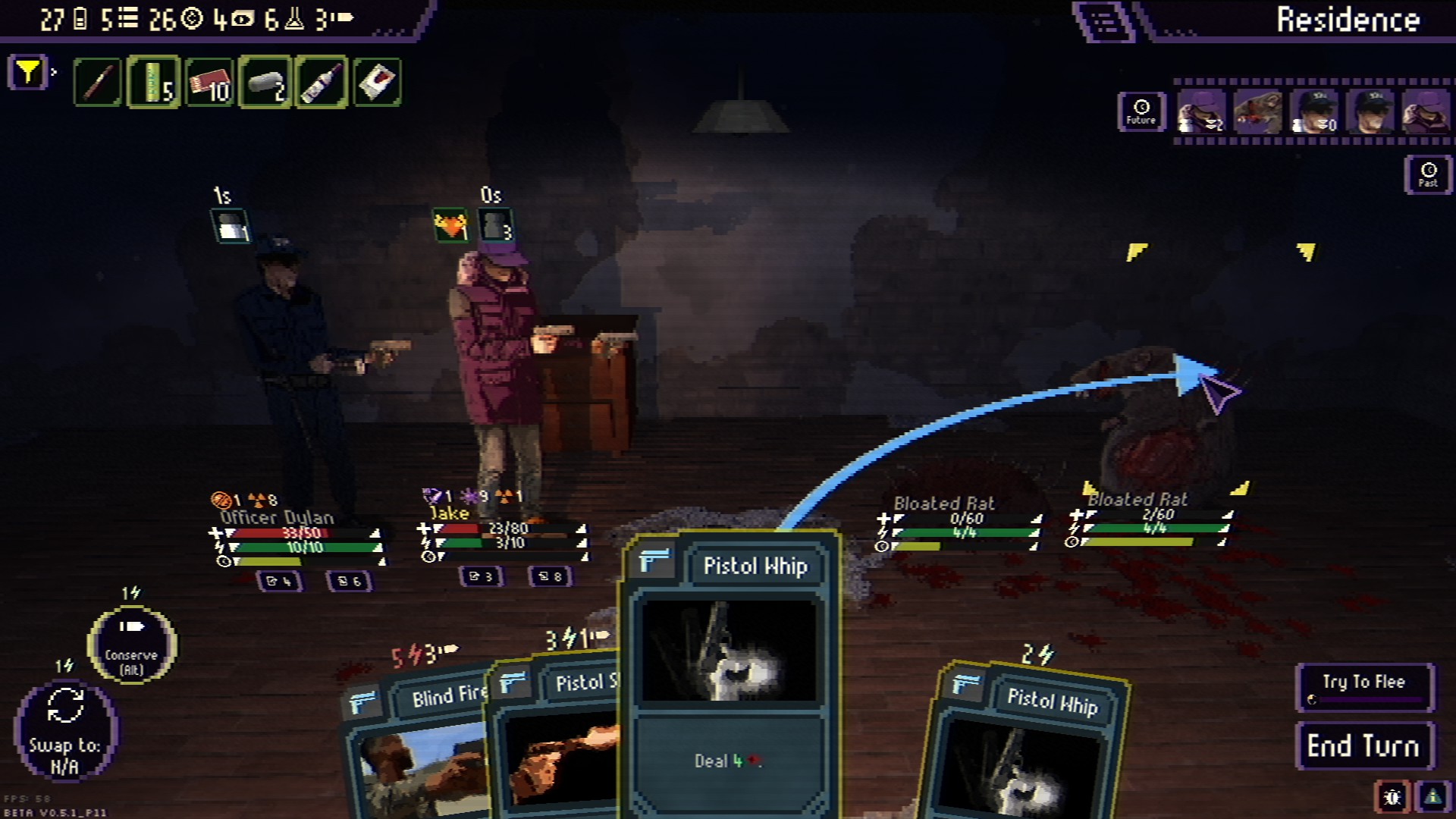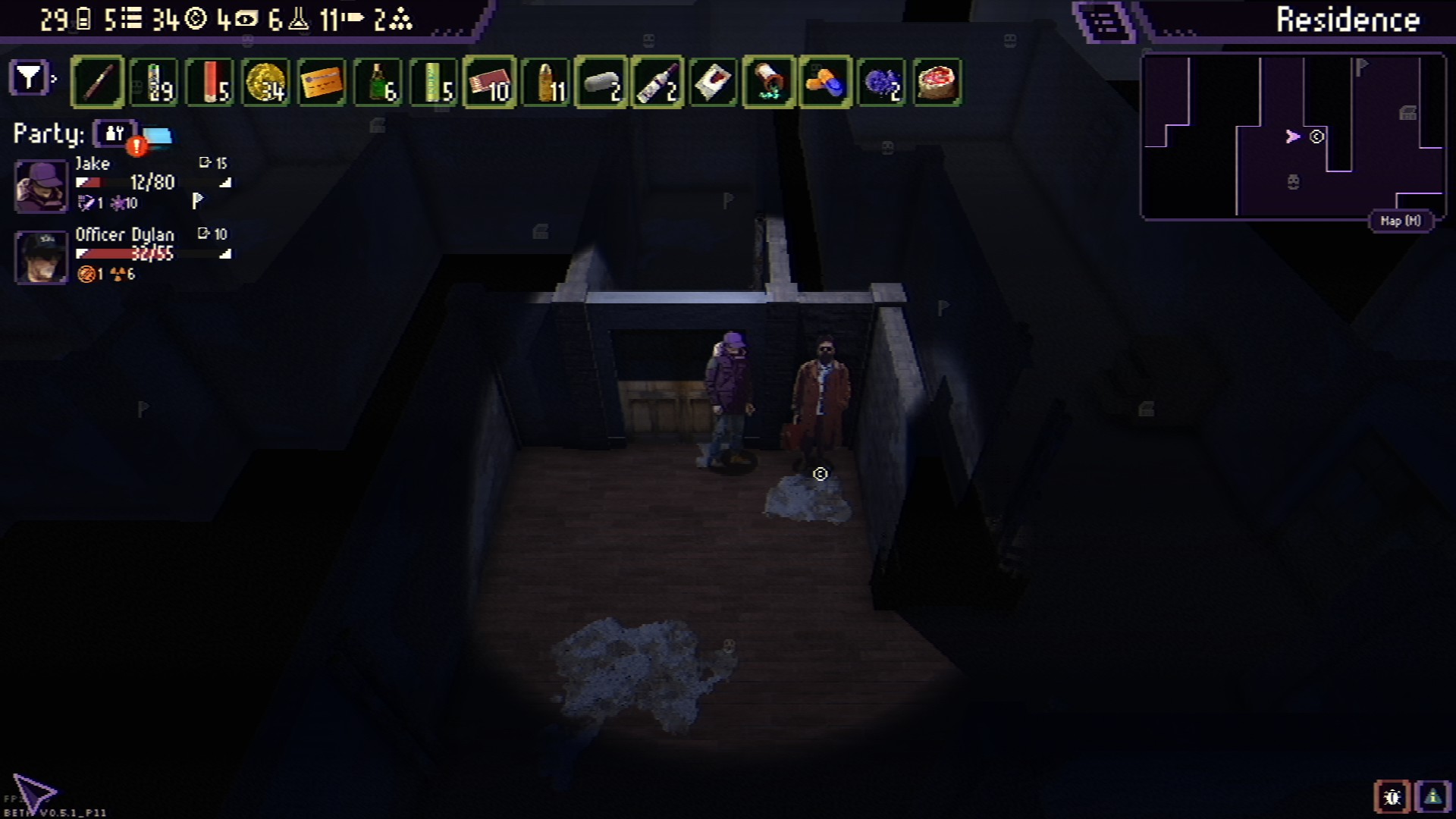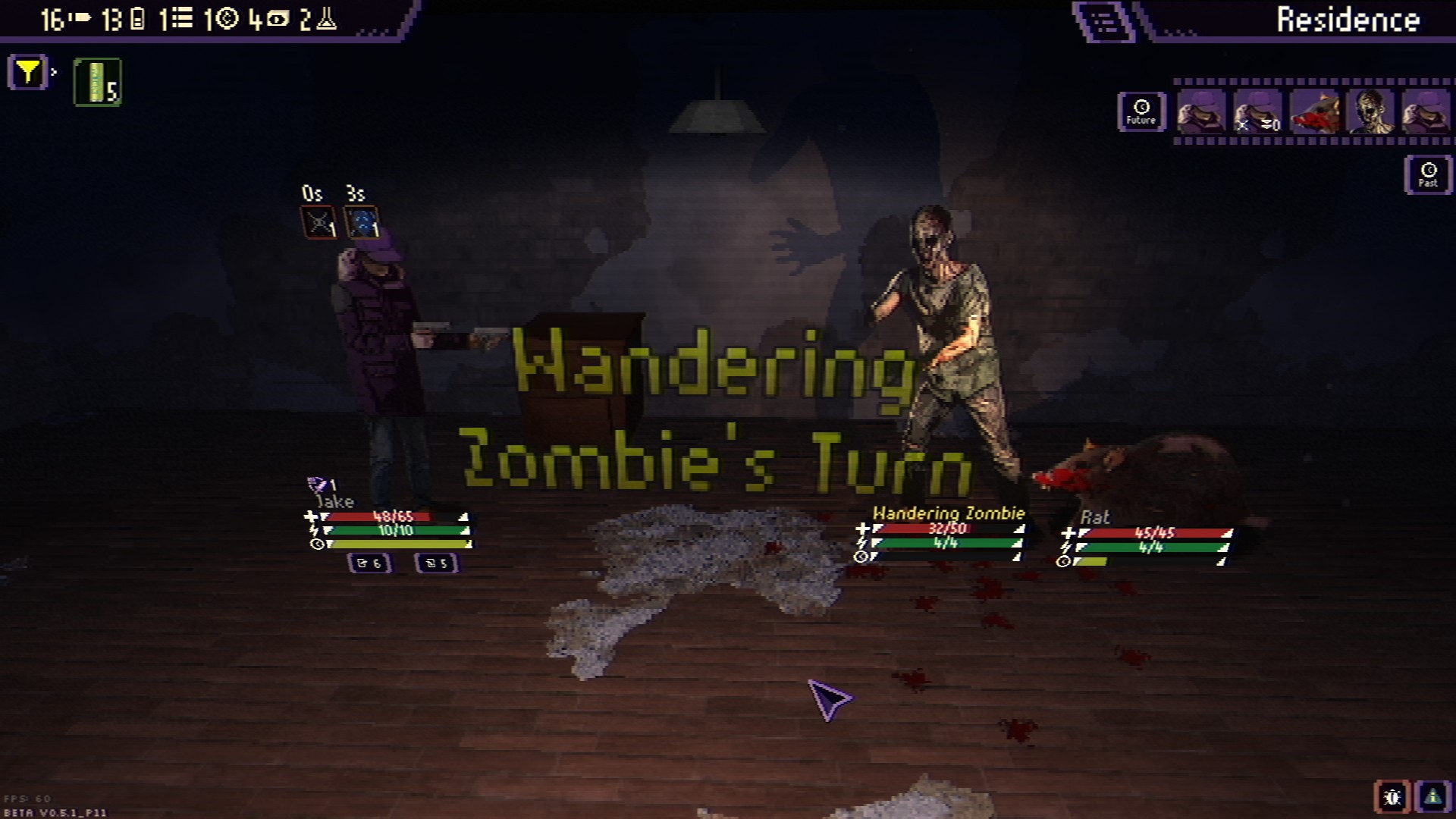This Resident Evil-inspired deckbuilding roguelike is murdering my evenings
Who doesn't love clocking zombies with a torch.
To state the obvious first: Draft of Darkness is not the best name for a game I've ever seen. It just makes me think of a rather windblown and gloomy house rather than a horror thrillfest built around high-octane card-shuffling. And it's not the only way that Draft of Darkness does itself a slight disservice: this is, as you will see, a game that's probably a bit too visually dark for its own good.
All of which is a pity, because this is a very good game indeed and, once I finished my first run, I immediately built a deck and went back in again. Draft of Darkness smooshes together roguelike and deckbuilder systems, and is basically split between grid-based 2D exploration (you can toggle the grid on and off visually, a nice touch) and turn-based combat built on cards.
The exploration element is fairly familiar stuff: each level's layout and spawns are randomly generated (the game launches in Early Access tomorrow on Steam with three themed areas, with more to come), and the location will contain enemies, NPC characters, vending machines, one-off elements featuring text-based "choices", and of course lots of lovely loot. On the normal difficulty enemies do move, but generally are fairly inactive, allowing you to pick-and-choose fights. Bump it up to high and they start going for you, and things get a lot tougher.

What sets Draft of Darkness apart from other deckbuilders is how the cards link to weapons. The game currently features three playable characters, each of whom use different weapons: the default chap Jake, for example, holds a flashlight and a pistol. Therefore Jake's starting deck consists of pistol and flashlight cards, which require that weapon to be equipped in order to use them. But you can also choose to, say, dual-wield pistols for a stat bonus, depriving you of the use of flashlight cards.
These cards also link back to the resource-gathering element of the game. To take the pistol cards, you'll get ones like Pistol Whip which is a low-cost attack that does relatively minor damage and uses no additional resources. Or you can use Pistol Shot, which is slightly more expensive (3 energy as opposed to 2), and uses one bullet, but of course will do a bit more damage than a pistol whip.
This side of Draft of Darkness initially caught me out. After emerging victorious from encounters you'll receive various rewards, including a choice of a new card for your current deck (your deck can be fiddled with at any time in exploration mode). On my first playthough, I happened upon a card called Suppressing Fire, which does a bit of damage and also weakens enemy attacks. Brilliant I thought, wait till those zombie rats get a load of this.
And Suppressing Fire is an amazing card! It does what it says. The only thing was, I hadn't noticed that it used three bullets rather than one. So I went from having a relatively healthy stock of around 50 bullets to, after a few encounters suppressing the hell out of baddies, realising I'd completely run out. At which point I could only pistol whip enemies, and started taking big damage which eventually led to the end of that run.
The biggest gaming news, reviews and hardware deals
Keep up to date with the most important stories and the best deals, as picked by the PC Gamer team.
C'est la vie, lesson learned and all that. On my next run I was much more efficient and cautious about the resource requirements of cards: guns need bullets, flashlights need batteries, and so on. There's a nice balance in Draft of Darkness on this side, where the levels are always serving you up roughly what you need to get by but, if you get wasteful, it'll start to pinch.

That is one of many elements that brings the Resident Evil series to mind and, frankly, the developer of this game loves Resident Evil. Which is fantastic because who doesn't, and it means Draft of Darkness is absolutely packed with in-jokes referring to that series (I haven't come across a Jill sandwich yet but give it time) and neat callbacks such as the "You Died" screen at the end of runs. This is not a Resident Evil game, obviously, but look, c'mere, shh: squint a bit, and don't tell Capcom, but it basically is.
The Resident Evil game it most reminds me of in a good way is, oddly enough, a bad Resi game that should have been better than it was. Resident Evil Outbreak was a PS2 title that was the series' first foray into the wonderful world of online, and featured multiple survivors with different skillsets who had to work together in order to try and escape alive. Fantastic concept, right? The game wasn't too hot.
Draft of Darkness brought this to mind because it is a game about escaping zombie-filled environments, where success or otherwise hinges on you finding other survivors and working with them, as well as assisting various NPCs whose branching storylines will play out across each run depending on your actions. There's a really neat in-game flowchart for the latter, showing you after each run what decisions you made and which route it took you down, a quality of life touch that helps you experiment and discover more of the game's possibilities than you might otherwise.
New party members will join with their own weapons, equipment, and pre-built deck, which you can then begin to chop-and-change as you wish. At this point the micro-management of Draft of Darkness does begin to feel a tiny bit too much, but that's because you're now managing the equipment and decks of multiple characters, and flicking around inventories to change a cap for a tiny speed boost after every single encounter can wear a little (though thankfully resources like batteries and ammo are shared between the group automatically).
It's when you have a party and have began acquiring some of the more unusual cards that Draft of Darkness's combat really starts to take off. When you're going around on your own it feels like enemies maybe have a bit too much health, groups of them are a nightmare, and it's a struggle to not be worn down by attritional damage.

Once you have a buddy, and you can have a party of up to four, the dynamic changes and your focus switches more to the synergies you can start building up: I had a cop companion who could boost Jake's courage, as well as 'cover' him for a turn (one attack doesn't land, basically), and get in surprisingly big damage with his flashlight. This cop also came with one of my favourite cards so far, Betrayal, which requires a flashlight to use, and basically illuminates another member of the team, attracting enemies towards them and reducing their defences at the same time, while ensuring that the cop himself won't be attacked. This turned out to be a genuinely useful card when the cop's HP was getting a little low (I mean, I don't know how Jake felt about it), and saved his bacon on several occasions.
It's building these synergies between characters that lifts Draft of Darkness's combat beyond the usual, and suggests there may be something here to really get one's fangs into. There's a wide range of weapons I haven't used yet (some of the playable characters are locked until you hit certain progress milestones) but even the basic loadouts have clear interplays going on and, best of all, the card theming really fits the weapons. With a pistol you'll be taking cover, dodge-rolling, suppressing, firing, pistol whipping, and other pistol-y things. With a flashlight you'll be distracting enemies, blinding them, bashing them with the butt of it, and of course betraying your buddies.
Each card also comes with bespoke animations that 'sell' the action being performed, and while Draft of Darkness is a wee bit gloomy for my tastes, the visuals pleasantly reproduce the PlayStation 1 era. The paper doll characters are distinct and full of flavour, while their looping battle animations (and those of the enemies) do a great job bringing the turn-based combat's exchanges to life. I even like the icons.
Draft of Darkness is not quite the finished article (that's Early Access, I guess), but it looks like it's going to get there in some style. If you like Slay the Spire and Monster Train and those kinds of games, this is definitely worth considering and, if you're a Resi nut like me, you may very well find this both itchy and tasty.

Rich is a games journalist with 15 years' experience, beginning his career on Edge magazine before working for a wide range of outlets, including Ars Technica, Eurogamer, GamesRadar+, Gamespot, the Guardian, IGN, the New Statesman, Polygon, and Vice. He was the editor of Kotaku UK, the UK arm of Kotaku, for three years before joining PC Gamer. He is the author of a Brief History of Video Games, a full history of the medium, which the Midwest Book Review described as "[a] must-read for serious minded game historians and curious video game connoisseurs alike."

